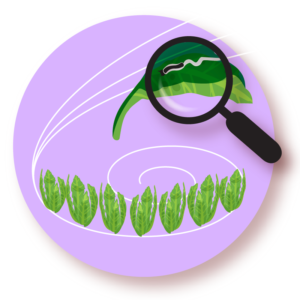For Consumers

WASHING – COOKING – FREEZING
Practicing diligent food hygiene and proper cooking methods are the most effective ways to avoid contracting this disease. The infection is caused most commonly by accidentally eating a slug that is hidden in raw produce, especially lettuce or leafy greens. Slugs may be as small as a grain of rice, and very difficult to spot in the folds of a leaf.
The best way to remove the slug is to rinse produce with forcefully running water, and carefully inspect each leaf. (Vinegar, peroxide and salt water dips are not any more effective than thoroughly cleaning with running water.)
Cooking and freezing also kill the parasite.
- Clean and inspect all fruits and vegetable regardless of where you purchased or gathered
- Wash with clean running water
- Cook, boil or steam produce at or above 165 degrees
- Cook well all culinary snails, crabs, frogs, prawns, shrimp and ‘opae, which may also carry the disease
- Do not slice into produce until after it has been thoroughly cleaned
- Curly kale and other leafy greens with lots of folds are safest if cooked or frozen
- Wash cutting surfaces regularly, clean reusable produce bags
- If in doubt, throw it out
- Wash pet bowls regularly and bring them inside at night to protect from slug infestation.
When buying produce or prepared foods at roadside vendors, practice the same food hygiene. Ask the food server about the origin of their food and precautions in handling.
PETS – LIVESTOCK
Pets and livestock can also be susceptible to rat lungworm infections. Make sure your pet and livestock food is stored in sealed containers safe from slugs; store food bowls in a safe place, especially at night when slugs are active; and rinse bowls out before feeding. Please stay alert to your pets’ areas and activities on your property. Puppies with developing nervous systems, and that chew on everything, are at greater risk.
WATER SAFETY – CATCHMENT PROTECTION
- Drink only filtered potable water.
- Do not drink unfiltered catchment water.
- Do not drink from hoses.
Download the Water Storage & Catchment Tank Safety Info pdf (linked here), with links to additional College of Tropical Agriculture and Human Resources library publications.
